M-audio Keystation 49 - New User Manual [ru]
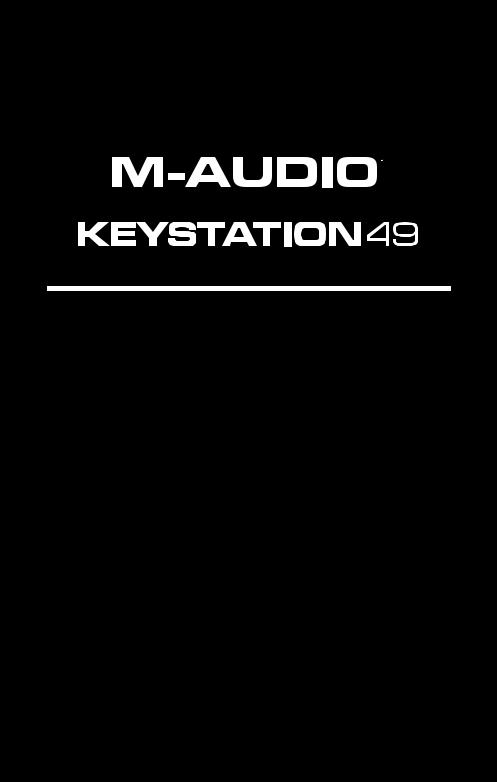
User Guide
English ( 2 – 8 )
Guía del usuario
Español ( 9 – 15 )
Guide d'utilisation
Français ( 16 – 22 )
Guida per l'uso
Italiano ( 23 – 29 )
Benutzerhandbuch
Deutsch ( 30 – 37 )
Appendix
English ( 39 )
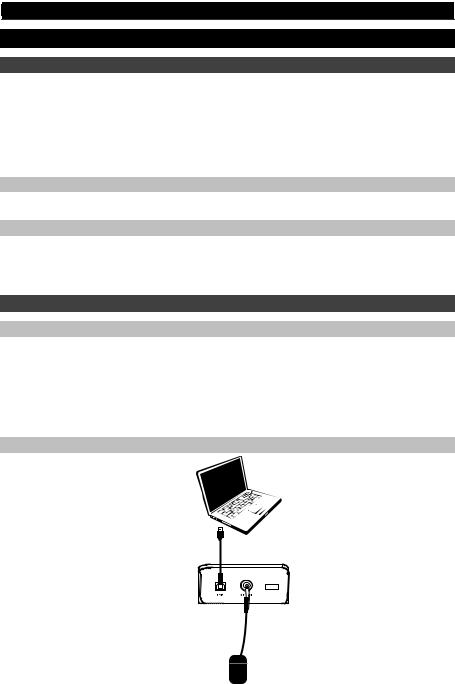
User Guide (English)
Introduction
Congratulations on purchasing the M-Audio Keystation 49 keyboard. The 49 key velocity-sensitive USB keyboard is designed to easily integrate with your PC or Macintosh computer. Keystation 49 offers semiweighted keys that give you the feel of a piano in a compact MIDI controller. Ideal for a multitude of music creation and education applications, Keystation 49 offers a pitch bend wheel, directional and transport buttons for software control, plus an assignable modulation wheel and a slider for hands-on control. Though Keystation 49 is class compliant and features true plug-and-play operation under Windows XP, Windows Vista, Windows 7, Windows 8, and Mac OS X, we recommend that you spend a few minutes reviewing this manual to learn about proper operation, advanced functionality, and programmability.
Box Contents
Keystation 49, USB Cable, Ableton Live Lite, User Guide, Safety & Warranty Manual
Support
For the latest information about this product (system requirements, compatibility information, etc.) and product registration, visit m-audio.com/keystation49.
For additional product support, visit m-audio.com/support.
Quick Start
Connecting Your Keyboard
Keystation 49 is powered through a USB connection to a computer. It is recommended that you connect Keystation 49 to a computer’s onboard USB port or to a powered USB hub. The single USB cable not only powers the keyboard but also sends MIDI data to and from your computer system.
You can also use Keystation 49 with your iPad to control supported music creation apps.
Connecting your Keystation 49 to an iPad requires the iPad Camera Connection Kit, which is available from the Apple Store.
Connection Diagram
COMPUTER*
ON/OFF
POWER
*SOLD SEPARATELY
SUSTAIN
PEDAL*
2

Recommended Installation
Ableton Live Lite: We've included Ableton Live Lite with your Keystation so you can get started making music with professional software right out of the box. Select the Ableton Live Lite software, open the "setup" application or .exe (Windows) or .mpkg file (Mac OS X), and then follow the on-screen instructions to install the software. Also, visit ableton.com to check for any available software updates.
Getting Started
Once you have finished installation you will need to configure your MIDI software to use the Keystation. Please note that when you press a key on the keyboard, you will not hear any sound. This is because pressing a key causes the keyboard to send out MIDI data. MIDI data gives instructions on how a sound should play, but in order to actually hear that sound you need to configure your music software to read the MIDI data being sent from the Keystation and play the sound back accordingly. This setup will more than likely entail going into an Options or Device Set-Up menu in your music software application and selecting the appropriate device. The Keystation should appear under the name “USB Audio Device” for Windows XP, Windows Vista, Windows 7, Windows 8 or as “Keystation 49” for other operating systems in the MIDI devices section of your music software application. Please consult the manual that came with your software for the proper setup procedure.
Features
Top Panel
Keyboard
Most of the white keys and black keys on the Keystation are labeled with names. When in the Advanced menu, pressing any of the labeled keys will allow for special operations such as adjusting the MIDI channel, transposing, and sending program change messages.
Octave Buttons
If you press the octave “+” button once, the LED above the octave “-” button will turn off, indicating the keyboard’s octave is now shifted up. If you press the octave “+” key again, you will shift one more octave up, and so on. It is possible to shift the keyboard up 3 octaves or down 3 octaves from 0 octave shift.
To shift the octave down, press the octave “-” button and notice that the LED above the octave “+” turns off. If only the LED above the octave “-” key is lit, the octave is shifted down and, if only the LED above the octave “+” key is lit, the octave is shifted up. The octave “+” and octave “-” LEDs will change color when moving up or down more than one octave.
To return the octave shift to 0, press both the octave “+” and “-” keys together. Both LEDs will light, indicating that the octave shift has returned to 0.
Volume Slider
The Volume Slider sends a MIDI message that controls the volume of the notes you are playing. The Volume Slider can also be assigned to different effects such as pan (balance), attack, reverb, chorus and many more. (See Advanced Functions for more information.)
Pitch Bend Wheel
As the name indicates, the pitch bend wheel is primarily used to bend the notes played on the keyboard up or down. This allows you to play phrases not normally associated with keyboard playing, such as guitar-style riffs. Your sound source determines how far you can bend the note. The usual setting is two semitones, but it can be up to two octaves up or down.
Modulation Wheel
The modulation wheel is typically used for modulation of the sound you are playing. This type of real-time controller was originally introduced on electronic keyboard instruments to give the performer options such as adding vibrato, just like players of acoustic instruments do. The modulation wheel is fully MIDI-assignable.
3
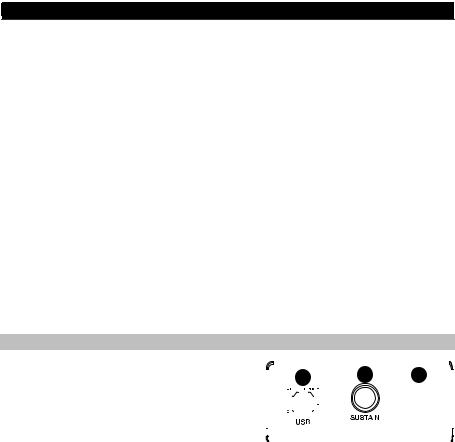
Advanced Functions Button
The Advanced Functions button is used to access all the advanced functions of the keyboard.
When the Advanced Functions button is pressed, the keyboard goes into “Edit Mode.” In Edit Mode, the keys on the keyboard are used for selecting functions and entering data.
The LED above the Advanced Functions button indicates whether or not Edit Mode is engaged. In Edit Mode, the black keys on the keyboard are used for selecting functions, while the white keys are used for data entry and channel selection.
Your keyboard will slip out of Edit Mode as soon as a function is selected, or the Advanced button, CANCEL or ENTER key is pressed (the LED above the Advanced Functions button will turn off). The keyboard can then be used to play notes again.
Note: Refer to the Advanced Functions section for more information.
Directional Buttons
These buttons can use the Mackie Control® or HUI® protocols to control certain functions in software that support them. Please see the Directional Buttons and Transport Buttons section of the Advanced Functions chapter for more information.
Transport Buttons
These buttons can use the Mackie Control or HUI protocols to control certain functions in software that support them. Please see the Directional Buttons and Transport Buttons section of the Advanced Functions chapter for more information.
Rear Panel
1. |
USB Port: The USB port delivers power to the keyboard |
|
|
|
|
|
|
|
|
|
|
|
|
|
|
|
|
|
|
|
|
|
|
|
|
|
|
|
|
|
|
|
|
|
|
|
|
|
|
|
|
||
1 |
|
|
|
2 |
3 |
|
|
|
|||||||||||||
|
and transmits MIDI data when connected to a computer |
|
|
|
|
|
|
||||||||||||||
|
|
|
|
|
|
|
|
|
|
|
|
|
|
|
|
|
|
|
|
|
|
|
to trigger a software synth or MIDI sequencer. |
|
|
|
|
|
|
|
|
|
|
|
|
|
ON/OFF |
||||||
2. |
Sustain Pedal Input: This socket accepts a |
|
|
|
|
|
|
|
|
|
|
|
|
|
|
|
|
|
|
|
|
|
|
|
|
|
|
|
|
|
|
|
|
|
|
|
|
|
|
|
|
||
|
|
|
|
|
|
|
|
|
|
|
|
|
|
|
|
|
|
|
|
||
|
momentary-contact foot pedal (sold separately). When |
|
|
|
|
|
|
|
|
|
|
|
|
|
POWER |
||||||
|
pressed, this pedal will sustain the sound you are |
|
|
|
|
|
|
|
|
|
|
|
|
|
|
|
|
|
|
|
|
|
|
|
|
|
|
|
|
|
|
|
|
|
|
|
|
|
|
|
|
|
|
|
playing without having to keep your fingers pressing |
|
|
|
|
|
|
|
|
|
|
|
|
|
|
|
|
|
|
|
|
|
down the keys. |
|
|
|
|
|
|
|
|
|
|
|
|
|
|
|
|
|
|
|
|
NOTE: The polarity of the sustain pedal is determined by the keyboard upon startup. When Keystation is powering up, the sustain pedal is assumed to be in the "up" (Off) position. It is important that the sustain pedal is not pressed during startup, otherwise the pedal will reverse its operation, and notes will sustain when the pedal is not pressed.
NOTE: A foot pedal can be used for sustaining the sound that you are playing, without having to keep your hands on the keyboard (just like the sustain pedal on a piano).
You can plug a foot pedal of any polarity, sold separately, into the foot pedal input on your M-Audio keyboard. The keyboard will automatically detect the correct polarity when powering up. If you want to reverse the polarity, simply depress the pedal when you switch on your keyboard.
3.On/Off Switch: Use this switch to power the device on or off.
4

Advanced Functions
In addition to setting an octave shift, the two octave “+” and “-” buttons discussed earlier in the manual under the section “Octave Buttons” can also be used to control one of six MIDI functions.
The first 6 black keys are used to select the function of the octave buttons. Some of the functions that these keys can be used for cannot send out a value less than 0. When used to control these functions, both LEDs above the buttons will remain on, regardless of the current setting of that function.
To select an alternate function:
1.Press the Advanced Functions button, putting the keyboard into Edit Mode.
2.Press the black key that represents the function you want. Edit Mode will finish as soon as you have selected the function and you will be able to play notes again.
Octave Shift
Another method of shifting the Keystation octaves is with the use of the keys labeled “Octave +” and “Octave -”. After the Advanced Function button has been pressed, placing the keyboard in Edit Mode, pressing these keys will shift the keyboard’s pitch up or down one or more octaves (one for each time pressed). The default octave shift designation is “0” and will be the octave setting each time you power up the keyboard. The lights above the octave buttons indicate that 0 octave shift is set when both are on.
To assign the “+” and “-” keys to control the octave:
1.Press the Advanced Functions button to get the keyboard into Edit Mode.
2.Press the black key representing “OCTAVE”. Edit Mode will finish as soon as OCTAVE has been pressed.
There is also a method of performing a quick octave change, which can be useful when using the octave buttons to control another MIDI function. This is accomplished as follows:
1.Press the Advanced Functions button to put the keyboard in Edit Mode.
2.Press the black key representing “OCTAVE +”, increasing the octave by 1 (you may press it again to increase the octave by 2, and so on). Press the black key representing “OCTAVE -”, decreasing the octave by 1 (you may press it again to decrease the octave by 2, and so on). Press the black key representing "OCTAVE 0" to reset the octave shift to 0.
3.When you have chosen your octave shift press “ENTER,” to select your Octave and leave Edit Mode. Selecting Cancel or Advanced will cancel the selection, and exit from Advanced mode.
Transposition
In some cases it may be useful to reduce or increase the pitch by a number of semitones rather than an entire octave. For example, if you are playing a song with a singer that is having difficulty hitting the top notes, you may want to reduce the pitch by one or two semitones. This is achieved using a MIDI function called “Transpose.”
Transpose works in the same way as Octave Shift above, except the shift can be up +/- 12 semitones. As with Octave Shift, there are two ways of transposing the keyboard. You can use the Octave “+” and “-” buttons, or the black keys “TRANSPOSE -,” “TRANSPOSE 0” and “TRANSPOSE +,” respectively.
To assign the Octave “+” and “-” buttons to transpose:
1.Press the Advanced Functions button to engage Edit Mode.
2.Press the black key representing “TRANSPOSE.” (Edit Mode will disengage as soon as “TRANSPOSE” has been pressed.)
3.Press the “+” key and you will hear the pitch of the note you play go up.
4.Press both “+” and “-” together to cancel transpose.
5

MIDI Channel
MIDI data from the keyboard can be sent on any of 16 MIDI Channels. However, certain MIDI devices and MIDI software applications require the keyboard to send data on a specified channel. If this is the case, you can change the channel the data is sent using the following method:
1.Press the Advanced Functions button to engage Edit Mode.
2.Press one of the 16 Channel keys, according to the Channel that you need.
For example, if a device specifies that you need to send data on Channel 10, press the Advanced Functions button, and select Channel 10. The Channel can also be assigned to the Octave “+” and “-” buttons. Once assigned, pressing “+” or “-” will increase or decrease the channel incrementally.
When Channel 16 is reached and “+” is pressed, Channel 1 will be selected. If the Octave “+” and “-” keys are selected to vary the Channel, the LEDs above the buttons will not change, since it is not possible to have a Channel with a negative value. Pressing both the “+” and “-” buttons together will recall Channel 1.
Program Change
Program Changes are used to change the instrument or voice you are using. For the sake of example, we will change the instrument to a bass sound. To do this we need to send a program change of 32. There are two ways to send a program change:
Incremental/Decremental Program Change:
1.Press the Advanced Functions button.
2.Press the black key representing PGM CHANGE.
3.Now the Octave “+” and “-” keys can be used to change the program.
4.Press “+” and continue to play notes until you find the instrument you want.
This method is useful if you want to cycle through different instruments to see which sounds best in your song.
Quick Select Program Change:
1.Press the Advanced Functions button.
2.Press the black key representing “PGM #.”
3.Press keys “3,” “2,” “ENTER.”
This method is useful if you want to select a specific number, as is the case here.
If the Octave “+” and “-” keys are selected to vary the Program number (Method 1), the LEDs above the buttons will not change, since it is not possible to have a Program with a negative value. Pressing both the “+” and “-” buttons together will recall Program 0, which selects a grand piano sound.
Bank LSB and Bank MSB
Program Changes are most commonly used to change instruments and voices. However, the number of instruments accessible via Program Changes is limited to 128. Some devices have more than 128 voices and require a different method to access these extra voices. Generally, these devices use Bank LSB and Bank MSB messages.
Incremental/Decremental Bank LSB and Bank MSB Changes:
1.Press the Advanced Functions button.
2.Press the black key representing “Bank LSB” or “Bank MSB”, respectively.
3.Now the Octave “+” and “-” keys can be used to change the Bank LSB.
4.Press “+” and continue to play notes until you find the instrument you want.
Using the Quick Select Method:
1.Press the Advanced Functions button.
2.Press the black key representing “Bank LSB” or “Bank MSB,” respectively.
3.Press keys “3,” “2,” “ENTER.”
As with Program Change, if the Octave “+” and “-” keys are selected to vary the Bank LSB or MSB number (Method 1), the LEDs above the buttons will not change, since it is not possible to have a Bank with a negative value. Pressing both the “+” and “-” buttons together will recall Bank 0.
6

Volume Slider Assignment
To assign the Volume Slider to an effect:
1.Press the Advanced Functions button to engage Edit Mode.
2.Press the black key representing “FADER.”
3.Use the Numerical Data Entry keys to enter the number of the effect you want to assign to the Volume Slider.
Alternatively, you can use the “+” and “-” buttons to change the value:
1.Press the Advanced Functions button to engage Edit Mode.
2.Press the black key representing “FADER.”
3.Use the “+” and “-” buttons to change the value.
4.Press the ENTER key.
5.Move the Volume Slider upwards to increase the value of the effect.
If you have made an error while entering the numerical data value, you can press the “CANCEL” key to exit Edit Mode without changing the effect assigned to the Volume Slider.
Note that each time the keyboard is turned off, the data assigned to the Volume Slider will be lost. Each time the keyboard is powered up, the Volume Slider will be assigned to volume (effect number 07) by default.
Modulation Wheel Assignment
It is possible to assign MIDI effects to the Modulation Wheel. Some useful effects are: MIDI CC 01 (Modulation), MIDI CC 07 (Volume), MIDI CC 10 (Pan), and MIDI CC 05 (Portamento). There are 132 effects in total. However, for these effects to have any affect on the sound, the receiving MIDI device must be able to read and respond to these MIDI effect messages. Most devices will at least respond to volume, modulation, and pan data.
To assign an effect to the Modulation Wheel:
1.Press the Advanced Functions button to engage Edit Mode.
2.Press the black key representing “WHEEL.”
3.Use the Numerical Data Entry keys to enter the number of the effect you want to assign to the Modulation Wheel.
Instead of entering in the value number, you can cycle through each effect one at a time using the “+” and “-” buttons. Once the correct value has been selected, press the ENTER key.
If you have made an error while entering the numerical data value, you can press the CANCEL key to exit Edit Mode without changing the effect assigned to the Modulation Wheel.
Note that each time the keyboard is turned off, the data assigned to the Modulation Wheel will be lost. Each time the keyboard is powered up, the Modulation Wheel will be assigned to modulation (effect number 01) by default.
For the sake of example, we will assign effect number 10 (pan, or balance) to the Modulation Wheel.
1.Press the Advanced Functions button to engage Edit Mode.
2.Press the black key representing “WHEEL.”
3.Press “1.”
4.Press “0” so you have entered “10.”
5.Press “ENTER.”
Directional Buttons and Transport Controls
The directional buttons and transport buttons use the Mackie Control or HUI protocols to control certain functions in software that support them.
To select which protocol these buttons use to communicate with your software:
1.Press the Advanced Functions button to get the keyboard into Edit Mode.
2.Press the key representing MACKIE/HUI.
Note: "+" and "-" LEDs will be lit green when in Mackie mode, or red when in HUI mode.
3.Press Enter.
Note: Your software must also be set to receive commands from an external device (i.e., Keystation) using the Mackie Control or HUI protocol. Mackie and HUI controls are sent on Virtual Port 2.
7

Troubleshooting
General
Here are answers to common questions you may have, using your Keystation keyboard:
Problem 1: My M-Audio hardware suddenly stopped working after having performed fine since installation.
Solution 1: Switch off the unit and let it sit for 10 seconds. Then restart your computer and try again. If the problem persists you may have to reinstall drivers for the unit.
Problem 2: I have plugged a sustain pedal into my M-Audio keyboard, but it works the wrong way around.
Solution 2: The polarity of the sustain pedal is calculated by the keyboard when it is powered up. On power up, the sustain pedal is assumed to be in the OFF position. So if you want the sustain pedal to be off when it is not depressed, make sure the pedal is not depressed when you power up.
Problem 3: When I press a key, there is a delay before I hear any sound.
Solution 3: This delay is known as latency. Latency with MIDI signals is due to the software application you are using. MIDI data is simply control data. The MIDI data is read by your software. The software then completes a large number of complex calculations in order to produce the sound you hear—all this takes time.
We strongly recommend a proper audio interface. Refer to m-audio.com for a selection of options. If you already have an adequate audio interface, try reinstalling the latest drivers for the audio interface, or try reducing the buffer sizes of the audio drivers.
MIDI Functionality
The Keystation keyboards have been designed to make working with MIDI on your computer as simple as possible. Nonetheless, you may still experience some difficulties. In many cases, the keyboard is not at fault; the problem lies with the receiving device. To counter this, there are two useful MIDI functions:
All Notes Off and Reset All Controllers.
All Notes Off
If you find there are hanging notes that you cannot stop playing, send an “All Notes Off” MIDI message by performing the following:
1.Press the Advanced Functions button to engage Edit Mode.
2.Press the black key representing “ALL OFF.”
3.Edit Mode will disengage, eliminating any hanging notes.
Reset All Controllers
If you find there is an effect on a voice that you do not want, rather than having to isolate and identify that effect, you can send a “Reset All Controllers” MIDI message by performing the following:
1.Press the Advanced Functions button to engage Edit Mode.
2.Press the black key representing “RESET.”
3.Edit Mode will disengage, eliminating all effects.
Factory Reset
1.Power off Keystation.
2.Hold down the buttons "ADVANCED", "OCT+", and "OCT-" simultaneously, until step 4.
3.Power on Keystation.
4.Release the three buttons.
The Keyboard is now back to the factory default settings.
8
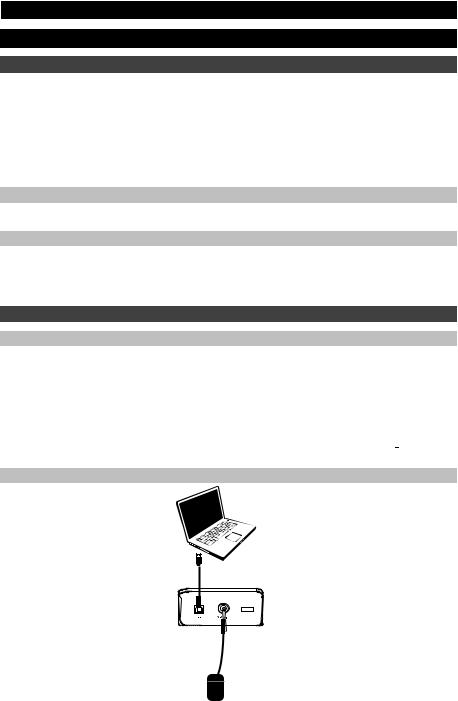
Guía del usuario (Español)
Introducción
Felicitaciones por la compra de su teclado M-Audio Keystation 49. Este teclado USB sensible a la velocidad de 49 teclas está diseñado para integrarse fácilmente con su PC o computadora Macintosh. El Keystation 49 ofrece teclas semicontrapesadas que le dan la sensación de un piano en un controlador MIDI compacto. Ideal para una multitud de aplicaciones de creación de música y educación, el Keystation 49 ofrece una rueda de inflexión de pitch, botones direccionales y de transporte para control de software, más una rueda de modulación asignable y un deslizador para control manual. A pesar de que el Keystation 49 cumple especificaciones de clase y ofrece una operación plug and play con Windows XP, Windows Vista, Windows 7, Windows 8 y Mac OS X, le recomendamos que se tome unos minutos para leer este manual y aprender acerca del funcionamiento correcto, la funcionalidad avanzada y programabilidad.
Contenido de la caja
Keystation 49, Cable USB, Ableton Live Lite, Guía del usuario, Manual sobre la seguridad y garantía
Soporte
Para obtener la información más completa acerca de este product (los requisitos del sistema, compatibilidad, etc) y registro del producto, visite m-audio.com/keystation49.
Para soporte adicional del producto, visite m-audio.com/support.
Inicio rápido
Conexión del teclado
El Keystation 49 se alimenta a través de una conexión USB a una computadora. Se recomienda que conecte el Keystation 49 al puerto USB incorporado de una computadora o a un concentrador USB alimentado. El único cable USB no solo alimenta al teclado sino que también envía datos MIDI desde y hacia su computadora.
También puede utilizar el Keystation 49 con su iPad para controlar las aplicaciones de creación de música compatibles.
La conexión del Keystation 49 con un iPad requiere el iPad Camera Connection Kit, que está disponible en Apple Store.
Diagrama de conexión
COMPUTADORA*
ON/OFF
POWER
* Se vende por separado
PEDAL DE SOSTENIDO*
9

Instalación recomendada
Ableton Live Lite: Hemos incluido Ableton Live Lite con su Keystation de modo que puede comenzar a hacer música con software profesional en cuanto lo saca de la caja. Seleccione el software Ableton Live Lite, abra la aplicación "setup" (instalación) o .exe (Windows) o el archivo .mpkg (Mac OS X), y luego siga las instrucciones de la pantalla para instalar el software. Visite también ableton.com para comprobar si hay actualizaciones de software disponibles.
Guía de inicio rápido
Una vez concluida la instalación deberá configurar su software MIDI para poder utilizar el Keystation. Recuerde que de momento el teclado no producirá ninguna clase de sonido cuando pulse una tecla. Esto se debe a que, al pulsar una tecla, el teclado se limita a enviar datos MIDI. Los datos MIDI son información acerca de cómo debe reproducirse un sonido, pero para poder oírlo necesita configurar su software musical para que lea los datos MIDI que Keystation le envía y los reproduzca de manera adecuada. Muy probablemente, esta configuración implicará la selección del dispositivo adecuado en algún menú “Opciones” o “Configuración de dispositivos” de su software musical. El teclado Keystation aparecerá en sus programas como “Dispositivo de audio USB” (en Windows Vista, Windows 7) o como “Keystation 49” (en otros sistemas operativos). Por favor, consulte el manual suministrado con su software para realizar una configuración correcta.
Características
Panel superior
Teclado
La mayoría de las teclas blancas y negras del Keystation tienen rótulos con nombres. Dentro del menú Advanced (Funciones avanzadas), presionar las teclas rotuladas permitirá realizar operaciones especiales tales como ajustar el canal MIDI, transponer enviar mensajes de cambio de programa.
Octave Buttons
Si oprime el botón OCT (octava) “+” una vez, el LED que está arriba del botón de octava “-” se apagará, indicando que la octava del teclado está desplazada hacia arriba. Si pulsa de nuevo el botón de octava “+”, el rango del teclado aumentará en dos octavas, y así sucesivamente. Puede modificar el rango del teclado hasta 3 octavas hacia arriba o hacia abajo partiendo de la posición predeterminada.
Para desplazar la octava hacia abajo, oprima el botón OCT “-” y note que el LED que está arriba del botón de octava “+” se apaga. Si sólo permanece iluminada la tecla de octava “-”, el rango de octavas está desplazado hacia abajo; Si sólo permanence iluminada la tecla de octava “+”, el rango de octavas está desplazado hacia arriba. Los LED de octava “+” y octava “-” cambiarán de color cuando se desplace hacia arriba o hacia abajo más de una octava.
Para regresar al rango normal 0, pulse ambas teclas de octava (“+” y “-”) al mismo tiempo. Ambos LEDs se iluminarán para indicar que el rango de octava se encuentra de nuevo en “0”.
Deslizador volumen
El deslizador de volumen envía un mensaje MIDI que controla el volumen de las notas que está tocando.
También puede asignarlo a diferentes efectos, como por ejemplo el panorama (balance), ataque, reverberación o chorus, entre otros. Para más información, consulte la sección Funciones avanzadas.
Rueda de pitch bend
La rueda de pitch bend se usa generalmente para alterar el tono de las notas tocadas en el teclado hacia arriba o hacia abajo, lo cual le permite tocar frases que no se asocian normalmente con un instrumento de teclado, por ejemplo un fraseo de guitarra.
Su fuente de sonido determina el rango en que la rueda de pitch bend altera el tono. El ajuste más común es dos semitonos, aunque puede ser de hasta dos octavas hacia arriba o hacia abajo.
10
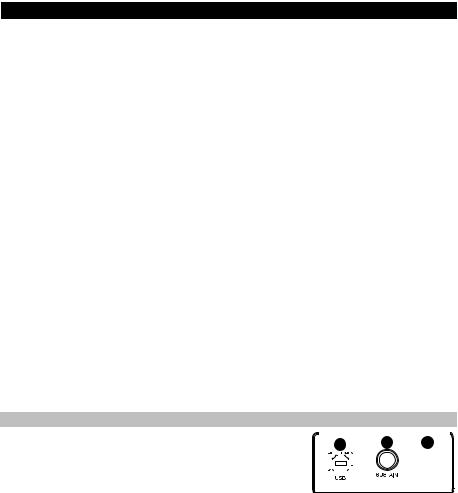
Rueda de modulación
La rueda de modulación se usa normalmente para modular el sonido que está tocando. Este tipo de controlador en tiempo real se incorporó originalmente en los teclados electrónicos para ofrecer al instrumentista opciones como las de agregar vibrato, tal como lo hace un músico al tocar un instrumento acústico. La rueda de modulación es totalmente asignable vía MIDI.
Advanced Functions botón
El botón Advanced Functions permite acceder a las funciones avanzadas del teclado.
Al pulsar este botón, el teclado entra en modo de programación. Mientras se encuentre en este modo, las teclas del teclado permiten seleccionar funciones e introducir datos.
El LED situado sobre el botón Advanced Functions indica si el teclado está o no en modo de programación. Cuando está en modo de programación, las teclas negras permiten seleccionar funciones, mientras que las blancas se usan para introducir datos y seleccionar canales.
Su teclado saldrá del modo Edit (Edición) cuando se seleccione una función o se pulse el botón Advanced, las teclas CANCEL (Cancelar) o ENTER (se encenderá el LED que está arriba del botón Advanced Functions [Funciones avanzadas]). Entonces podrá volver a utilizar el teclado para tocar notas.
Nota: Para más información, consulte la sección Funciones avanzadas.
Botones direccionales
Estos botones pueden usar los protocolos Mackie Control® o HUI® para controlar ciertas funciones del software que los soporta. Para más información, consulte la sección Botones direccionales y botones de transporte del capítulo Funciones avanzadas.
Botones de transporte
Estos botones pueden usar los protocolos Mackie Control o HUI para controlar ciertas funciones del software que los soporta. Para más información, consulte la sección Botones direccionales y botones de transporte del capítulo Funciones avanzadas.
Panel trasero
1. |
Puerto USB: El puerto USB suministra alimentación al teclado y |
1 |
|
|
2 |
3 |
|
|
|||||||
|
transmite datos MIDI cuando se conecta a una computadora para |
|
|
|
|
|
|
|
|
ON/OFF |
|||||
|
disparar un secuenciador MIDI o sintetizador de software. |
|
|
|
|
|
|
|
|
|
|
|
|
|
|
|
|
|
|
|
|
|
|
|
|
POWER |
|||||
|
|
|
|
|
|
|
|
|
|
||||||
2. Entrada para pedal de sustain: Esta toma permite conectar un pedal (se vende por separado). El pedal se usa normalmente
para sostener el sonido con el pie en lugar de mantener las manos sobre el teclado.
ATENCIÓN: El teclado detecta la polaridad del pedal de sustain en el momento de su puesta en marcha. Al poner en marcha un teclado Keystation, se asume que el pedal de sustain está en posición "inactiva" (Off). Es importante no pulsar el pedal de sustain durante el arranque de la unidad; de lo contrario, el pedal invertirá su funcionamiento y las notas se reproducirán en sostenido cuando no se pulse el pedal.
ATENCIÓN: El pedal se usa normalmente para sostener el sonido sin necesidad de mantener las manos sobre el teclado, tal como sucede con un piano acústico. Puede conectar un pedal (no suministrado) de cualquier polaridad en la entrada para pedal del teclado. Al ponerse en funcionamiento, el teclado detectará automáticamente la polaridad del pedal conectado. Si desea invertir la polaridad, mantenga el pedal pulsado al poner el teclado en funcionamiento.
3.Conmutador On/Off: Este conmutador enciende y apaga la unidad.
11

Funciones avanzadas
Además de determinar el cambio de octava, los botones de octava “+” y “-” mencionados anteriormente en la sección “Botones de octava” también pueden usarse para controlar una de las 6 funciones MIDI disponibles.
Las 6 primeras teclas negras se usan para seleccionar la función de los botones de octava. Algunas de las funciones asignadas a estas teclas no admiten valores inferiores a 0. Si usa los botones de octava para controlar dichas funciones, se iluminarán los indicadores situados sobre ambos botones, con independencia del ajuste actual de la función.
Selección de una función alternative:
1.Pulse el botón Advanced Functions para acceder al modo de programación.
2.Pulse la tecla negra correspondiente a la función deseada. Una vez seleccionada la función el teclado abandonará el modo de programación y sus teclas funcionarán de nuevo con normalidad.
Cambio de octava: Los botones de octava “+” y “-”
Otro método para cambiar el rango de octavas del teclado consiste en usar las teclas etiquetadas como “Octava +” y “Octava-”. Después de pulsar el botón Advanced Functions y haber entrado en modo de programación, pulsando estas teclas podrá cambiar el rango de octavas una o más octavas hacia arriba o abajo (una octava por pulsación). El ajuste de rango de octavas predeterminado es “0”. Éste es también el ajuste que encontrará cada vez que ponga el teclado en funcionamiento Cuando los indicadores situados sobre los botones de octava están ambos iluminados ello significa que el teclado usa el ajuste predeterminado (“0”).
Para asignar los botones “+” y “-” al control del rango de octavas:
1.Pulse el botón Advanced Functions para acceder al modo de programación.
2.Pulse la tecla negra que representa “OCTAVE”. El teclado abandonará el modo de programación en cuanto pulse OCTAVE.
También existe otro método para cambiar rápidamente el rango de octavas que puede ser útil si usa los botones de octava para controlar otra función. Haga lo siguiente:
1.Pulse el botón Advanced Functions para acceder al modo de programación.
2.Pulse la tecla negra representa “OCTAVA +”, desplazando el rango de octava hacia arriba (si la pulsa dos veces, lo desplazará dos octavas, y así sucesivamente).
Pulse la tecla negra representa “OCTAVA -”, desplazando el rango de octava hacia abajo; si la pulsa dos veces lo desplazará octavas, etc.). Pulse la tecla negra que representa la "OCTAVA 0" para reiniciar el desplazamiento de octavas a 0.
3.Cuando haya elegido su desplazamiento de octavas, pulse “ENTER” para seleccionar su octava y salga del modo de edición. Al seleccionar Cancel o Advanced se cancela la selección y se sale del modo Advanced.
Transposición
En algunos casos resulta práctico subir o bajar el tono del teclado en un determinado número de semitonos, más que en octavas completas. Por ejemplo, puede que esté tocando una canción con un cantante que tiene dificultades con las notas más altas. En este caso, baje el tono en uno o dos semitones usando la función MIDI llamada “Transpose”. Para hacerlo, use la función MIDI llamada “Transpose” (Transposición).
La transposición funciona de la misma manera que el desplazamiento de octavas arriba explicado, excepto que el desplazamiento puede ser de hasta +/- 12 semitonos. Al igual que sucede con el desplazamiento de octava, existen dos métodos para transportar el tono del teclado. Puede usar los botones de octava “+” y “-”, o las teclas negras “TRANSPOSE -,” “TRANSPOSE 0” y “TRANSPOSE +,” respectivamente.
Asignación de los botones “+” y “-” a la función de transposición:
1.Pulse el botón Advanced Functions para acceder al modo de programación.
2.Pulse la tecla negra representa “TRANSPOSE”. El teclado abandonará el modo de programación en cuanto pulse “TRANSPOSE”.
3.Pulse la tecla “+” para escuchar como sube el tono del teclado.
4.Pulse “+” y “-” al mismo tiempo para cancelar la transposición.
12
